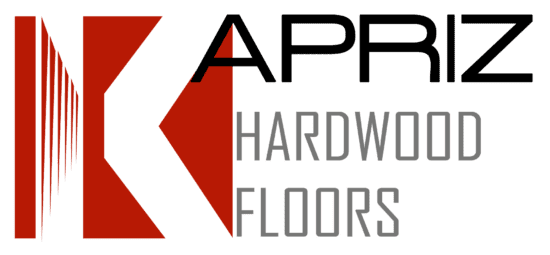Solid Hardwood is milled from a single piece of hardwood, usually 3/4″ thick. Engineered wood is constructed from 3 or more thin sheets (called plies) of wood that are bonded together to form a single plank. The plies are usually laid with the grain in opposite directions for greater stability. The composite plank is between 1/4″ and 9/16″ thick, and only the top layer (veneer) is high quality wood of the selected species.
Because of its construction, engineered wood flooring is more dimensionally stable than solid wood, which will expand and contract with changes in temperature and humidity. Solid wood should not be installed in bathrooms, over radiant heating or below ground level (nor can it be installed on concrete). By contrast, engineered wood can be installed in all these places.
Because it expands and contracts more easily, solid wood flooring must be acclimated for a longer period at the installation site before being installed.
Solid wood flooring usually has a wear layer above the tongue and groove of about 1/4″, so it can be sanded down and refinished multiple times. If the veneer layer of engineered wood is equally thick (6mm or 7mm), it can be refinished as many times as a solid hardwood floor. However, the veneer layer on some engineered products is thinner, and the floor made from this wood can be refinished fewer times.
Engineered wood flooring
is most often prefinished rather than site finished, which provides it with a more durable protective coat. However, site finished engineered wood is also available, with veneer layers of 4mm up to 10mm.
Some engineered flooring is manufactured with interlocking grooves that allow it to be installed without glue or nails (called a ‘floating floor’). Solid wood flooring is always glued or nailed down directly to the subfloor.
After installation, and judging it only by its appearance, you cannot usually tell the difference between solid and engineered flooring.
 Factory finished flooring
Factory finished flooring
(also called ‘prefinished’) is just that: flooring with the finishing layer of stain and wear-protection applied at the factory. With unfinished, or site finished flooring, this finish is applied at the installation site. There are advantages and disadvantages to each.
With factory finished flooring, what you see is what you get. There is a wide, but not unlimited, selection of wood species, stains and protective coats.
Your options are far greater with site finished wood: you can select almost any wood species, apply any stain, and decide for yourself what protective coating to use. This makes it much easier to match existing flooring elsewhere in the building, or to install a floor that blends in well with existing furniture and decor.
A factory finish is usually more durable, with aluminum oxide urethane coatings applied and dried in a controlled factory environment. By comparison, site finished floors typically receive 3-4 coats of polyurethane that are applied and allowed to cure by air drying.
Engineered wood flooring
that is constructed with a relatively thin wear layer (4mm or less), and that is not intended to be refinished multiple times, is usually sold with a factory finish.
Factory finished flooring is more expensive to purchase, but easier, quicker and less expensive to install. Sanding site finished wood will always result in some dust. The application of the finish can leave a residual odor in the air, and take hours, or even days to dry in between coats. By contrast, factory finished floors are ready to go as soon as they are installed.
Factory finished floors usually have bevels, which are needed to assure there are no edges from one plank rising higher than the adjacent plank, but site finished flooring allows for straight edges. Read more about edges and bevels below.
 To understand flooring edges and bevels, it is useful to consider the traditional hardwood floor: it is solid hardwood with square edges where the planks meet and it is site finished. Because of the square edges, the planks appear to fit together closely without noticeable lines between them.
To understand flooring edges and bevels, it is useful to consider the traditional hardwood floor: it is solid hardwood with square edges where the planks meet and it is site finished. Because of the square edges, the planks appear to fit together closely without noticeable lines between them.
Inevitably, some planks will be slightly thicker than adjacent planks, causing them to rise higher from the underlying subfloor. Any slight irregularities in the subfloor (a small bump or slope) will cause the same thing: the edge of one plank will stick up above the adjacent plank. The result is ‘raised edges’ (a condition called overwood), edges that could catch a sock or even cut a bare foot. However, the sanding that is always done as part of the site finishing process removes these edges.
With factory finished flooring, the planks are not sanded down after they are installed. Any raised edges where the planks meet are there to stay.
To address the problem of raised edges, the manufacturers of factory finished flooring create bevels on the surface where the planks meet. These bevels, and the finish applied over them at the factory, smooth out any sharp edges.
A full bevel is noticeable as a line between planks. It results in a more rustic look that is appreciated by some homeowners and disliked by others, in part because large bevels can collect dust.
In recent years, manufacturers of factory finished hardwood flooring have introduced smaller bevels, called ‘ eased edge ‘ or ‘ micro bevels’ which are less noticeable. It is even possible to get factory finished flooring with square edges, but these floors are always engineered wood planks that lock together and ‘float’ on the subfloor, rather than being nailed or glued down.
The Janka Scale is used to compare the hardness of different species of wood, and their resistance to scratches, dents and wear.
 The softest and lightest wood, Balsa, has a Janka rating of 90. The hardest wood species is Lignum Vitae (4390), which has been exploited to the brink of extinction and is now an endangered species.
The softest and lightest wood, Balsa, has a Janka rating of 90. The hardest wood species is Lignum Vitae (4390), which has been exploited to the brink of extinction and is now an endangered species.
Red Oak, the most commonly used species for flooring in the United States, has a Janka rating of 1290 – and this is sometimes used as a benchmark. Hickory, with a Janka rating of 1820, is 41% harder than Red Oak.
Some species, such as Aspen (Janka rating of 350), White Pine (420) and Chestnut (540) are too soft to be used for hardwood flooring.
The durability of flooring depends not just on the hardness of the wood, but also upon the finish.
Janka ratings apply only to solid wood flooring; for engineered wood the hardness will depend on the species used for the veneer, the thickness of the veneer, the composition of the sub layers and the bonding process.
 [row ]
[row ]
[col span=”1/4″ ]
Clear.
Mostly heartwood, with very little of the color variations that are introduced by mixing heartwood and sapwood. Virtually no blemishes or character marks. Average board length at least 36″.
[/col]
[col span=”1/4″ ]
Select.
A combination of heartwood and sapwood, producing more color variation. Few and only very small character marks. Average board length at least 33″.
[/col]
[col span=”1/4″ ]
No. 1 Common.
Heartwood and sapwood combined, with more prominent color variations and character marks. Average board length at least 28″.
[/col]
[col span=”1/4″ ]
No. 2 Common.
Also called Rustic grade. Includes boards with considerable color variation and noticeable character marks. Average board length at least 24″.
[/col]
[/row]
The hardwood grading system was set up by the National Hardwood Lumber Association (NHLA) and applies primarily tosite finished wood.
Prefinished flooring usually follows a similar grading system:
- Clear Grade
- Select and Better
- Country or Exclusive Grades
- Traditional, Antique, Character Grades
- Tavern or Cabin Grade
Not all manufacturers belong to the NHLA and follow their standards.
Some manufacturers sell, at considerable discount, Utility Grade solid, unfinished flooring that does not meet the standards of No. 2 Common. Utility grade planks will often have missing tongues, machine burns, splits in the wood, open knots and other defects; often they come in lengths as short as 8 to 12 inches.
 Solid hardwood floor planks are usually 3/4″ thick and have a wear layer above the tongue and groove of 1/4″. They can be sanded down and refinished between 4 and 7 times.
Solid hardwood floor planks are usually 3/4″ thick and have a wear layer above the tongue and groove of 1/4″. They can be sanded down and refinished between 4 and 7 times.
How often you will need to refinish the floor will depend on a great many factors, such as the floor traffic and wear, how often the floor is recoated, and the hardness of the wood. A typical homeowner sands and refinishes his hardwood floor once every 15 to 25 years.
A hardwood floor can usually be resanded so long as the remaining wear layer is at least 1/16″ thick throughout the surface.
Higher quality engineered floors come with a thick wear layer, sometimes as much as 5mm (3/16″) or more.
Lower quality engineered floors have a paper-thin wear layer, sometimes as little as 0.8mm (1/32″).
 The way the log is cut determines the orientation of the grain in the wood.
The way the log is cut determines the orientation of the grain in the wood.
Plain Sawn lumber (also known as ‘flat sawn’) is by far the most common wood used for hardwood floors. It is the most economical. On the face of a plank, the annual growth rings are spaced relatively far apart and often show the cathedral arch pattern that is common among species such as oak. The growth rings visible from the butt of the plank will usually run from parallel to the surface of the plank up to a 45 degree angle from the surface.
Quartersawn lumber costs about twice as much as plain sawn wood, and is not often used for flooring. On the face of the plank, the growth rings are relatively straight and close together. In species such as oak, the wood’s medullary rays are sometimes visible as flecks (called ray flecks). On the butt of the plank, the grain usually runs from 60% to 90% from the surface of the plank.
Rift Sawn boards are cut perpendicular to the growth rings. They are the most costly boards to produce because large triangles of waste are left from between each board. Grain lines visible on the face are relatively straight and tight; medullary rays are not usually visible. On the butt of the board, the grain is oriented 30-60 degrees to the board’s face.
Rotary Cut veneer is sometimes used as the top layer for engineered hardwood flooring. The grain pattern is broad, dramatic and erratic – the same appearance as plywood.
Wood boards are dimensionally very stable along the grain, less so against the grain. They can sometimes warp or cup ‘toward the bark’, as if the growth rings were trying to straighten. For this reason, quartersawn and rift sawn boards have greater stability than plain sawn boards.
 Laminate is a flooring option that combines a realistic appearance of wood or stone with durability and economy.
Laminate is a flooring option that combines a realistic appearance of wood or stone with durability and economy.
Price. The price for materials ranges from about $1 per square foot up to about $11 for high-end choices.
Size. Laminate planks typically come in 4′ lengths, although products with longer size planks are available. Plank widths vary by product, 3 1/2″ to 5″ is most common. Plank thickness ranges from 7mm to 12mm; thicker boards are stronger, less apt to bend, and also reduce sound. Some manufacturers add a pad to the bottom of the plank, eliminating the need for underlayment and making it easier to install, and measurements of plank thickness need to take this into account.
Durability. The product is highly durable and scratch resistant. Good quality laminates come with a warranty against stains, fading, and moisture damage. Warranty periods range from 5 to 30 years, or even a lifetime warranty for residential use. AC Ratings are assigned to laminate flooring products to measure their durability and scratch resistance:
AC 1: Residential, Moderate traffic: Suitable for bedrooms, guest rooms
AC 2: Residential, General traffic: Suitable for living rooms, dining rooms
AC 3: Residential, Heavy traffic: Suitable for all areas
AC 4: Commercial, General traffic: Office, restaurant, boutique
AC 5: Commercial, Heavy traffic: Public buildings, department stores
Installation. It is relatively easy to install. Most laminate flooring comes in planks that interlock and that do not have to be fixed to the underlying subfloor. This “floating floor” method of installation saves considerable time and cost. Laminate flooring can be installed in many places, such as bathrooms, below ground level and over concrete, where solid hardwood flooring should not be installed.
Drawbacks. There are some drawbacks to laminate flooring. The product can’t be refinished, so when one plank is damaged it must be replaced. The gloss can’t be changed. Over time the wear layer will degrade and scratches will appear, and then the entire floor must be replaced. The printed pattern repeats with a frequency that varies by product (but may be as infrequent as every 20 planks). Laminate flooring is relatively hard and unyielding underfoot, and can sound somewhat hollow when you walk on it.
Wear Layer. Transparent, protective wear layer, usually made from an aluminum oxide clear coat.
Decorative Layer. Thin paper printed with a high definition image of wood grain or stone.
Substrate Layer. Medium or high density fiberboard for stability and impact resistance.
Backing Layer. Plastic, paper or melamine – for moisture resistance and additional stability.



